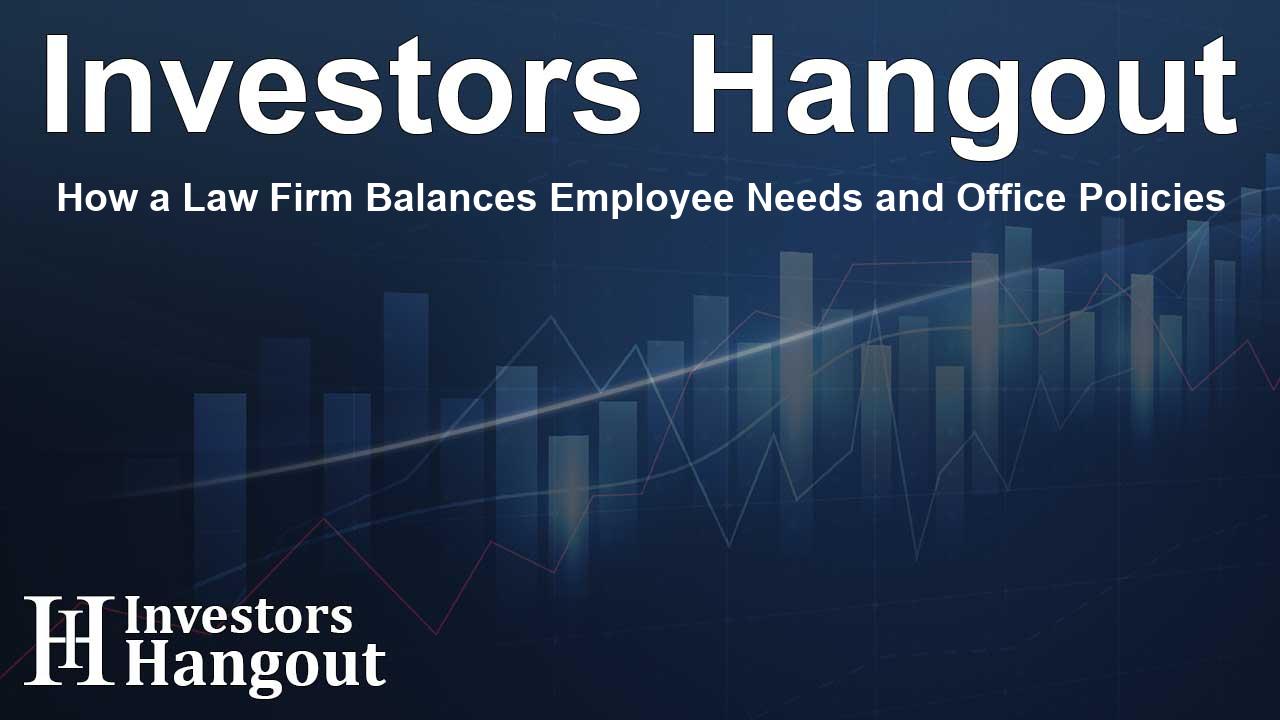How a Law Firm Balances Employee Needs and Office Policies

Navigating Return-to-Office Strategies
In recent years, many companies have grappled with the challenging task of transitioning employees back to in-person work environments. After a prolonged period of remote work, firms are reassessing their return-to-office (RTO) strategies to find an effective balance.
Andrew Raines: A Cultural Approach
Andrew Raines, the founder of a prominent law firm with over 120 attorneys distributed across seven offices, believes that culture and client service are paramount in making these decisions. His approach to RTO policies is deeply rooted in the firm’s identity.
Raines expresses the core philosophy of the practice: to cultivate an environment where lawyers strive for self-actualization, ensuring they offer exemplary service to their clients. This cultural focus is especially important for maintaining a motivated workforce.
The Significance of In-Person Interaction
For Raines, personal interaction is not just beneficial; it’s essential. He notes, "We don’t want to lose that interaction because it reinforces our culture and it trains people... The isolation just does not serve that." This approach highlights the importance placed on direct communication and relationship-building within the firm.
Tailored Attendance Policies
The firm's RTO strategies vary by location, recognizing that each office has unique commuting realities. Raines points out, "LA is a little bit more difficult simply because of the commuting time." Offices in regions like Pittsburgh and Delaware see higher in-office attendance due to shorter commutes, thus adapting policies accordingly.
Employees are encouraged to come into the office between two to four days a week, with certain meetings held exclusively in-person to promote full engagement and combat issues like "Zoom fatigue." Raines emphasizes that participation is crucial during these sessions.
Adopting a People-First Philosophy
Raines champions a people-first strategy, asserting that employees' needs should take precedence in formulating RTO policies. He discusses the common pitfalls of rigid, top-down mandates that often generate pushback from staff. By contrast, his firm solicits employee feedback and offers accommodations whenever possible.
This thoughtful approach enables the firm to maintain a robust office culture while still upholding high service standards for their clients. Procedures like providing 90 days’ notice before RTO changes allow employees to adjust their commitments with ample time.
Strengthening Inter-office Connections
To nurture the firm’s culture across multiple offices and time zones, Raines employs creative tactics such as distributing orange pens and friendship bracelets. These small gestures instill a sense of unity and connection among team members, akin to a school spirit.
Quarterly partner retreats and consensus-building sessions further engage employees, fostering collaboration and ensuring all voices are heard in key decision-making processes related to policy updates.
Future of Work Models
Looking to the future, Raines anticipates a shift toward more office-first work models within the industry. However, he envisions these changes being implemented with far greater flexibility than seen in the past. He advises leaders to observe and engage with their teams, integrating feedback into their strategies.
His final words to other leaders resonate clearly: don’t shy away from dialogue with your staff. Understanding their needs and communicating openly will lead to more effective policies that cater to both employee and organizational requirements.
Frequently Asked Questions
What strategies does Andrew Raines use for employee engagement?
Raines emphasizes the importance of in-person interaction and encourages feedback from employees to shape return-to-office policies, promoting a collaborative environment.
How does Raines’ law firm determine office attendance requirements?
The firm tailors attendance policies based on location, considering commuting challenges and encourages attendance two to four days a week.
What is the significance of culture in the return-to-office approach?
Maintaining a strong office culture is crucial for client service and employee satisfaction, which Raines prioritizes through direct interactions and engagement initiatives.
How do small gestures strengthen inter-office connections?
Raines uses creative methods such as distributing symbolic items to foster a sense of belonging and unity among staff, enhancing firm culture across different locations.
What advice does Raines offer to other leaders about office policies?
Leaders are encouraged to engage in open conversations with their teams, ensuring that policies reflect employee needs while balancing client demands.
About The Author
Contact Olivia Taylor privately here. Or send an email with ATTN: Olivia Taylor as the subject to contact@investorshangout.com.
About Investors Hangout
Investors Hangout is a leading online stock forum for financial discussion and learning, offering a wide range of free tools and resources. It draws in traders of all levels, who exchange market knowledge, investigate trading tactics, and keep an eye on industry developments in real time. Featuring financial articles, stock message boards, quotes, charts, company profiles, and live news updates. Through cooperative learning and a wealth of informational resources, it helps users from novices creating their first portfolios to experts honing their techniques. Join Investors Hangout today: https://investorshangout.com/
The content of this article is based on factual, publicly available information and does not represent legal, financial, or investment advice. Investors Hangout does not offer financial advice, and the author is not a licensed financial advisor. Consult a qualified advisor before making any financial or investment decisions based on this article. This article should not be considered advice to purchase, sell, or hold any securities or other investments. If any of the material provided here is inaccurate, please contact us for corrections.
